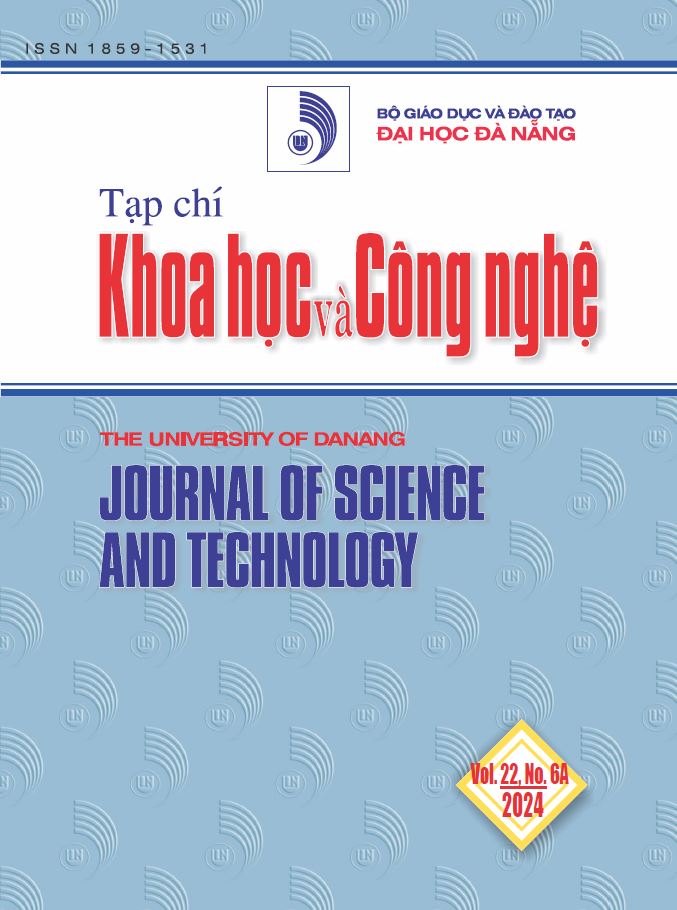Port-hamiltonian formulation of an electrical circuit using different kinds of states
 Tóm tắt: 252
Tóm tắt: 252
 |
|  PDF: 187
PDF: 187 
##plugins.themes.academic_pro.article.main##
Author
-
Hoang Ngoc HaInstitute of Research and Development, Duy Tan University, VietnamHo Phuoc TienThe University of Danang - University of Science and Technology, Vietnam
Từ khóa:
Tóm tắt
This work focuses on a dynamic electrical circuit whose dynamics are affine in the control input. Such dynamics are considered to be re-expressed in a canonical form, namely the port-Hamiltonian (pH) representation with dissipation, where the Hamiltonian is a quadratic function and has the unit of energy or power. On this basis, it allows revealing the transformation of energy (or power) inside the system, including the energy supply, storage and dissipation, thereby facilitating Lyapunov-based or energy-related control approaches for stabilization and optimization purposes. Two pH representations are proposed and compared; the first one is established with difficult-to-measure states while the second one is obtained with easier-to-measure states.
Tài liệu tham khảo
-
[1] K. Khalil, Nonlinear systems, 3rd edition. NJ: Prentice Hall, 2002.
[2] V. Schaft, L2-gain and passivity techniques in nonlinear control, 3rd edition. London: Springer, 2017.
[3] Brogliato, R. Lozano, B. Maschke, and O. Egeland, Dissipative system analysis and control - Theory and applications, 2nd edition. London: Springer-Verlag, 2007.
[4] Ortega, A. Loría, P. J. Nicklasson, and H. S. Ramírez, Passivity-based control of Euler-Lagrange systems: Mechanical, electrical and electromechanical applications, 1st edition. London: Springer, 1998.
[5] Antonelli and A. Astolfi, “Continuous stirred tank reactors: easy to stabilise?”, Automatica, vol. 39, no. 10, pp. 1817-1827, 2003.
[6] Favache and D. Dochain, “Power-shaping control of reaction systems: The CSTR case”, Automatica, vol. 46, no. 11, pp. 1877-1883, 2010.
[7] Ramírez, B. Maschke, and D. Sbarbaro, “Irreversible port-Hamiltonian systems: A general formulation of irreversible processes with application to the CSTR”, Chemical Engineering Science, vol. 89, pp. 223-234, 2013.
[8] Ramírez, Y. L. Gorrec, B. Maschke, and F. Couenne, “On the passivity based control of irreversible processes: A port-Hamiltonian approach”, Automatica, vol. 64, pp. 105-111, 2016.
[9] Guay and N. Hudon, “Stabilization of nonlinear systems via potential-based realization”, IEEE Transactions on Automatic Control, vol. 61, no. 4, pp. 1075-1080, 2016.
[10] C. Kosaraju, M. Cucuzzella, J. M. A. Scherpen, and R. Pasumarthy, “Differentiation and passivity for control of Brayton-Moser systems”, IEEE Transactions on Automatic Control, vol.66, no. 3, pp. 1087-1101, 2021.
[11] Ortega, A. V. Schaft, B. Maschke, and G. Escobar, “Interconnection and damping assignment passivity based control of port-controlled Hamiltonian systems”, Automatica, vol. 38, no. 4, pp. 585-596, 2002.
[12] Wu, R. Ortega, and G. Duan, “On universal stabilization property of interconnection and damping assignment control”, Automatica, vol. 119, 2020.
[13] Ortega, A. V. Schaft, F. Castanos, and A. Astolfi, “Control by interconnection and standard passivity based control of port-Hamiltonian systems”, IEEE Transactions on Automatic Control, vol. 53, no. 11, pp. 2527-2542, 2008.
[14] Ferguson, A. Donaire, and R. H. Middleton, “Integral control of port-Hamiltonian systems: non-passive outputs without coordinate transformation”, IEEE Transactions on Automatic Control, vol. 62, no. 11, pp. 5947-5953, 2017.
[15] P. Borja, R. Ortega, and J. M. A. Scherpen, “New results on stabilization of port-Hamiltonian systems via PID passivity-based Control”, IEEE Transactions on Automatic Control, vol. 66, no. 2, pp. 625-636, 2020.
[16] Ortega, A. V. Schaft, I. Mareels, and B. Maschke, “Putting energy back in control”, IEEE Control Systems Magazine, vol. 21, no. 2, pp. 18-33, 2001.
[17] G. Canseco, D. Jeltsema, R. Ortega, and J. M. A. Scherpen, “Power-based control of physical systems”, Automatica, vol. 46, no. 1, pp. 127-132, 2010.
[18] S. Nguyen, N. H. Hoang, and M. A. Hussain, “Feedback passivation plus tracking error-based multivariable control for a class of free-radical polymerization reactors”, International Journal of Control, vol. 92, no. 9, pp. 1970-1984, 2019.
[19] H. Hoang, T. S. Nguyen, T. K. P. Le, T. T. H. Phan, M. A. Hussain, and D. Dochain, “Trajectory tracking for nonlinear systems using extended quadratic port-Hamiltonian models without input and state coordinate transformations”, Systems & Control Letters, vol. 167, 2022.
[20] Maschke, R. Ortega, and A. V. Schaft, “Energy-based Lyapunov functions for forced Hamiltonian systems with dissipation”, IEEE Transactions on Automatic Control, vol. 45, no. 8, pp. 1498-1502, 2000.
[21] V. Schaft, “Port-controlled Hamiltonian systems: Towards a theory for control and design of nonlinear physical systems”, SICE journal, vol. 39, no. 2, pp. 91-98, 2000.
[22] H. Hoang, “A comparative analysis of passivity-based control approaches with application to linear dynamical systems”, The University of Danang - Journal of Science and Technology, vol. 6, no .127, pp. 4-7, 2018.
[23] H. Hoang, D. Dochain, F. Couenne, and Y. L. Gorrec, “Dissipative pseudo-Hamiltonian realization of chemical systems using irreversible thermodynamics”, Mathematical and Computer Modelling of Dynamical Systems, vol. 23, no. 2, pp. 135-155, 2017.
[24] H. Hoang, P. Q. Le, and C. T. Nguyen, “A unified port-Hamiltonian approach for modelling and stabilizing control of engineering systems”, Vietnam Journal of Science and Technology, vol 9, no. 1, pp. 96-109, 2021.
[25] Z. P. Jiang, T. Bian, and W. Gao, Learning-Based control: A tutorial and some recent results. Boston: Now Publishers Inc, 2020.



